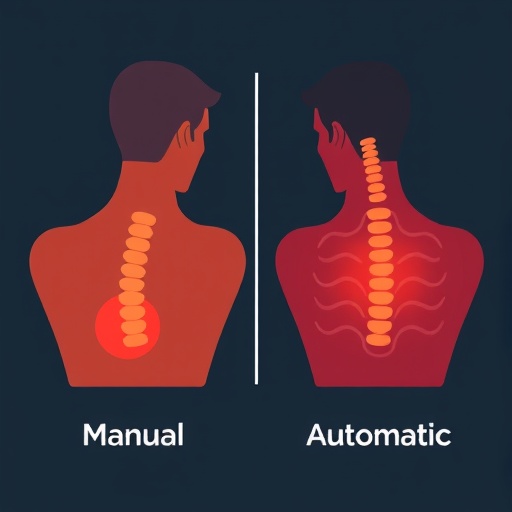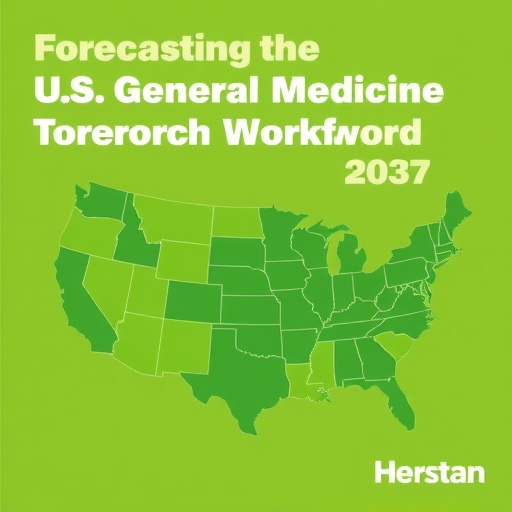In a groundbreaking study published in BMC Nursing, researchers have delved into an important yet often overlooked aspect of neonatal care: the method of blood collection in term infants. The pain and stress associated with medical procedures can have profound implications for this vulnerable population, making it essential to identify the least distressing methods. This randomized controlled trial led by Kadiroğlu, Güven, and Yalçın presents compelling evidence regarding the efficacy and comfort of manual versus automatic lancet devices during capillary heel blood collection.
Neonates are frequently required to undergo blood tests for a variety of reasons, including metabolic screening and detecting infections. One of the most common methods for obtaining blood samples in infants is through capillary heel puncture, a procedure that can induce pain and anxiety. Understanding how different lancet designs influence these experiences is crucial for optimal neonatal care. This study offers a detailed comparison between the two prevalent techniques—manual and automatic lancet use—highlighting their impacts on pain perception, stress levels, physiological parameters, and crying duration.
The randomized controlled trial involved a carefully selected group of term neonates who were subjected to both manual and automatic lancet techniques. By analyzing the infants’ responses to each method, the research team aimed to quantify the differences in pain and distress experienced. Both subjective and objective measures were employed, providing a comprehensive view of the neonates’ experiences. Notably, the research design adhered to rigorous ethical standards, ensuring that the well-being of all infants involved was paramount.
Pain perception was evaluated using established pain assessment scales tailored for infants, taking into account their unique developmental stage. The medical staff also measured physiological indicators such as heart rate and oxygen saturation, allowing for an objective assessment of the infants’ stress responses during the procedures. The crying duration served as a critical behavioral index to differentiate the impact of the two lancet techniques. Such multifaceted analysis enables a nuanced understanding of how infants react to pain and procedural stress, ultimately guiding healthcare practices.
Findings from the study reveal a significant difference in pain levels between the manual and automatic methods. Infants subjected to automatic lancets demonstrated a marked reduction in cry duration compared to those who underwent manual puncture. The data suggests that the automatic lancet may provide a less invasive option that yields quicker results while minimizing discomfort. This revelation could be pivotal in shaping future practices for neonatal blood collection, ensuring that the least torturous options are prioritized in clinical settings.
Moreover, the study contributes to an expanding conversation about infant pain management in healthcare. Pain in neonates is often underrecognized, yet it can lead to adverse developmental outcomes if not addressed adequately. By illustrating the physiological and emotional effects of finger-prick techniques, the researchers underscore the importance of adapting medical practices to optimize experiences for infants and their families.
The implications of this study extend beyond immediate comfort levels. Understanding the long-term effects of pain during such early interventions could guide adjustments in clinical protocols. Potential consequences of repeatedly painful experiences in infancy could have lasting repercussions, including an increased sensitivity to pain later in life. Hence, such research calls for a reevaluation of pain management strategies following neonatal procedures.
Policy-makers, clinicians, and researchers are urged to consider the findings in their quest for more compassionate and effective care for the youngest patients. By advocating for the adoption of less painful techniques, healthcare professionals can play a critical role in mitigating the negative impacts of such necessary medical interventions. The evidence provided through Kadiroğlu et al.’s research serves as a catalyst for broader changes in neonatal care standards.
As we continue to learn more about the human experience of pain, especially in pediatric care, it is clear that innovations in devices and techniques can make a substantial difference. The use of advanced technologies, such as automatic lancets, not only streamlines medical procedures but also promotes a more humane approach to healthcare for newborns.
In conclusion, the insights derived from this study pave the way for reformed practices in capillary blood collection. Given the potential to reduce pain and related stress in neonates, automatic lancets should be considered as a mainstream option. Ultimately, prioritizing the comfort of infants in medical settings reflects a commitment to improving overall health outcomes and fostering a gentler approach to healthcare.
Healthcare protocols need to be adaptable, and incorporating findings from such important research is crucial. As the medical field evolves, the treatment paradigm must shift toward patient-centered practices, especially in pediatrics, where vulnerable populations, such as neonates, require the utmost care. Thus, the importance of this study cannot be overstated—it is a step toward advancing the science of nursing and pediatric care.
The research also opens avenues for future studies that can further investigate different techniques and their impacts on various age groups within pediatric care. Understanding pain and stress in infants is a field ripe for exploration, and studies like this one establish the groundwork for innovative approaches in enhancing the quality of care provided.
As the healthcare community moves forward, the conclusions drawn from this study by Kadiroğlu, Güven, and Yalçın may well serve as a guiding beacon for best practices in neonatal blood collection, emphasizing that even the smallest medical procedures deserve careful consideration regarding their impact on young patients.
In light of these findings, it is imperative that healthcare providers remain vigilant and informed while continually adapting their methodologies to align with emerging evidence and advancements in medical technology. Future studies could amplify our understanding of neonates’ pain management and drive innovations that ensure every medical intervention prioritizes their comfort and well-being.
Subject of Research: The effects of manual and automatic lancet use on pain, stress, physiological parameters, and crying duration during capillary heel blood collection in term neonates.
Article Title: The effects of manual and automatic lancet use on pain, stress, physiological parameters and crying duration during capillary heel blood collection in term neonates: a randomized controlled trial.
Article References:
Kadiroğlu, T., Güven, M., Yalçın, R. et al. The effects of manual and automatic lancet use on pain, stress, physiological parameters and crying duration during capillary heel blood collection in term neonates: a randomized controlled trial.
BMC Nurs 24, 1409 (2025). https://doi.org/10.1186/s12912-025-04056-y
Image Credits: AI Generated
DOI: https://doi.org/10.1186/s12912-025-04056-y
Keywords: neonatal care, blood collection, pain management, manual lancet, automatic lancet, capillary heel puncture, randomized controlled trial, nursing practices.
Tags: capillary heel puncture in neonatescrying duration during blood testsefficacy of blood sampling methodsimpact of lancet design on infantsinfant pain perception during proceduresmanual vs automatic lancetsneonatal blood collection techniquesneonatal medical proceduresoptimizing neonatal comfort and carerandomized controlled trial in pediatricsreducing pain in infantsstress levels in neonatal care





